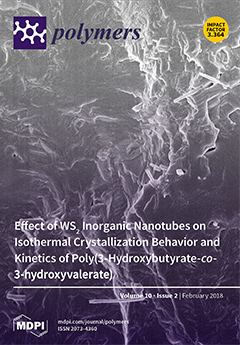Open AccessArticle
Sortase-Mediated Ligation of Purely Artificial Building Blocks
by
Xiaolin Dai 1,2,‡, Diana M. Mate 3,†,‡, Ulrich Glebe 1,2,‡, Tayebeh Mirzaei Garakani 3,4, Andrea Körner 3, Ulrich Schwaneberg 3,4,* and Alexander Böker 1,2,*
1
Fraunhofer Institute for Applied Polymer Research IAP, Geiselbergstr. 69, 14476 Potsdam-Golm, Germany
2
Lehrstuhl für Polymermaterialien und Polymertechnologie, University of Potsdam, 14476 Potsdam-Golm, Germany
3
DWI—Leibniz Institute for Interactive Materials e.V., Forckenbeckstr. 50, 52056 Aachen, Germany
4
Institute of Biotechnology, RWTH Aachen University, Worringer Weg 3, 52074 Aachen, Germany
†
Current address: Center of Molecular Biology “Severo Ochoa”, Universidad Autónoma de Madrid, Nicolás Cabrera 1, 28049 Madrid, Spain.
‡
These authors contributed equally to this work.
Cited by 12 | Viewed by 6987
Abstract
Sortase A (SrtA) from
Staphylococcus aureus has been often used for ligating a protein with other natural or synthetic compounds in recent years. Here we show that SrtA-mediated ligation (SML) is universally applicable for the linkage of two purely artificial building blocks. Silica
[...] Read more.
Sortase A (SrtA) from
Staphylococcus aureus has been often used for ligating a protein with other natural or synthetic compounds in recent years. Here we show that SrtA-mediated ligation (SML) is universally applicable for the linkage of two purely artificial building blocks. Silica nanoparticles (NPs), poly(ethylene glycol) and poly(
N-isopropyl acrylamide) are chosen as synthetic building blocks. As a proof of concept, NP–polymer, NP–NP, and polymer–polymer structures are formed by SrtA catalysis. Therefore, the building blocks are equipped with the recognition sequence needed for SrtA reaction—the conserved peptide LPETG—and a pentaglycine motif. The successful formation of the reaction products is shown by means of transmission electron microscopy (TEM), matrix assisted laser desorption ionization-time of flight mass spectrometry (MALDI-ToF MS), and dynamic light scattering (DLS). The sortase catalyzed linkage of artificial building blocks sets the stage for the development of a new approach to link synthetic structures in cases where their synthesis by established chemical methods is complicated.
Full article
►▼
Show Figures






